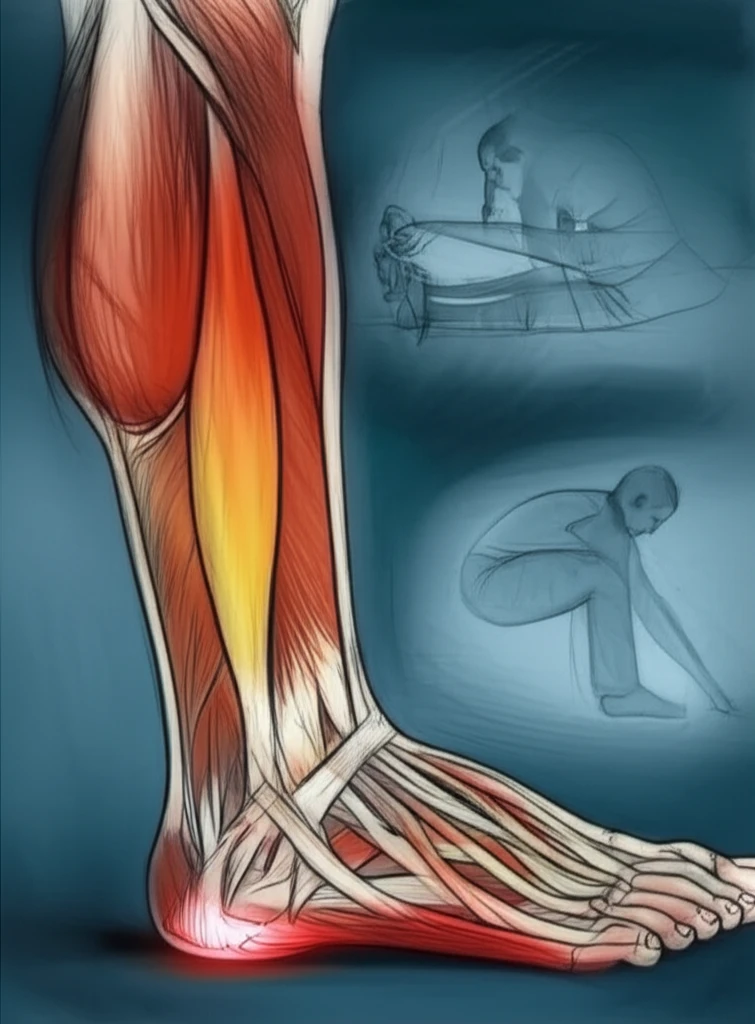
Decoding Foot & Ankle Pain: Is Tightness the Culprit? Unraveling Gastrocnemius Tightness for Relief
"Understanding the Link Between Gastrocnemius Tightness, Forefoot Issues, and Ankle Discomfort: A Guide to Diagnosis and Relief"
Foot and ankle pain can be a frustrating experience, impacting everything from daily activities to overall well-being. While many factors can contribute to these issues, a growing body of research is pointing to a common, yet often overlooked, culprit: gastrocnemius tightness. This condition, characterized by a lack of flexibility in your calf muscles, may be more directly linked to your foot and ankle woes than you realize.
This article dives into the surprising connection between gastrocnemius tightness and foot and ankle pathology (FAP), drawing on recent studies and expert analysis. We'll explore how tightness in your calf muscles can contribute to various foot problems, including plantar fasciitis, metatarsalgia, and even ankle discomfort. By understanding this link, you can take informed steps toward finding relief and improving your mobility.
Join us as we unravel the complexities of gastrocnemius tightness, offering practical insights, actionable advice, and a fresh perspective on foot and ankle health. Whether you're struggling with persistent pain or simply curious about the causes of foot problems, this guide provides valuable information to empower you to take control of your foot and ankle health.
Gastrocnemius Tightness: What It Is and Why It Matters for Your Feet and Ankles

The gastrocnemius muscle, the larger of the two calf muscles, plays a critical role in ankle movement and overall lower limb function. When this muscle becomes tight, it restricts the ankle's range of motion, leading to several potential problems. For example, this tightness increases pressure on the forefoot and ankle joints during walking, running, or even standing. This can lead to various foot and ankle problems, including plantar fasciitis, metatarsalgia (pain in the ball of the foot), and chronic ankle instability.
- Limited Ankle Flexibility: Tightness restricts the natural movement of the ankle, making it more difficult to point your toes up.
- Increased Stress on Foot and Ankle: The lack of flexibility can place undue stress on the plantar fascia, Achilles tendon, and ankle joints.
- Altered Gait Mechanics: Tightness can change how you walk, potentially leading to compensatory movements that increase your risk of injury.
- Pain and Discomfort: Persistent tightness can lead to pain in the heel, arch, ball of the foot, and even the ankle.
- Increased Risk of Injury: Tightness can make you more susceptible to sprains, strains, and other soft tissue injuries.
Taking Action: Managing Gastrocnemius Tightness and Promoting Foot Health
If you suspect that gastrocnemius tightness might be contributing to your foot and ankle pain, consulting with a healthcare professional is important. They can assess your condition, conduct the necessary tests, and recommend a treatment plan. Depending on the severity of the tightness and the underlying issues, treatment options may include stretching exercises, physical therapy, orthotics, or, in some cases, surgical intervention. By understanding the role of gastrocnemius tightness in your situation, you can take informed steps toward a pain-free and active life.
